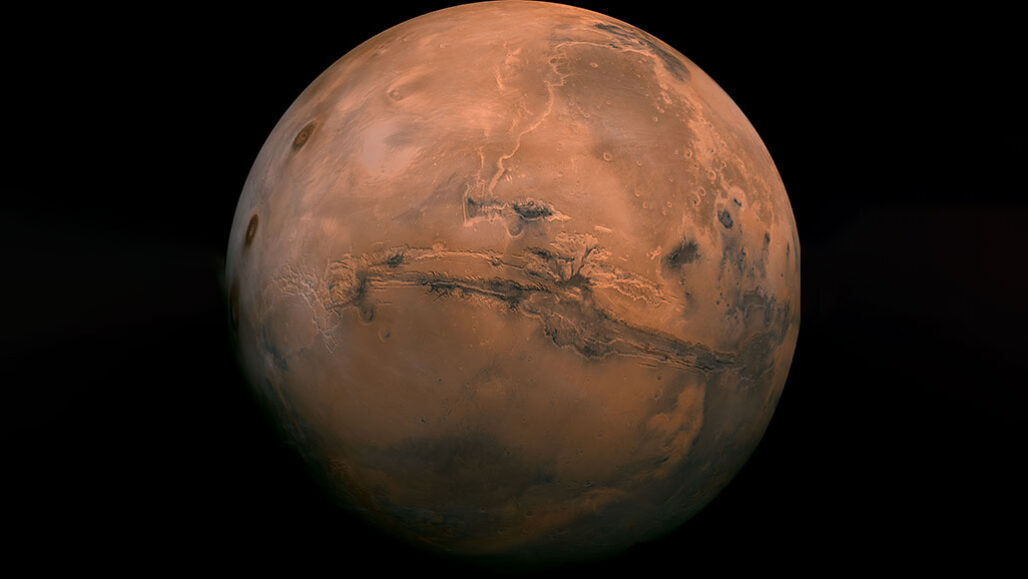Let’s learn about Mars
The Red Planet has a lot of Earth-like features, but getting there won’t be an easy trip

This picture of Mars was put together from a series of photos taken by the Viking orbiter. The huge trench running across the surface is more than 3,000 kilometers (2,000 miles) long. That’s as long as the United States is wide.
NASA/JPL-Caltech
Mars and Earth have a lot in common. They’re both rocky planets. Though Mars is smaller, both planets have a similar length of day. They both have ice, and Mars might even have liquid water like Earth. Mars may have earthquakes — er, well, Marsquakes. And scientists have been gathering evidence that Mars, too, may hold life, in the form of microbes.
The Red Planet, like Earth, is in the Goldilocks zone around the sun. That’s a zone where water can exist as a liquid — which means temperatures are right for life to potentially exist. But that doesn’t mean Mars would be a fun place for humans. Mars’ thin atmosphere doesn’t have the oxygen we need to breathe. Temperatures get very, very cold. And wind storms can be devastating.
Still, Mars is a prime target for future astronauts, even if getting to Mars and back is no easy task. Mars is relatively close to Earth, at least for an object in space. At its closest, Mars is only 62.07 million kilometers (38.6 million miles) away. That’s far enough that any messages will take 20 minutes to travel back home. And a space trip would take six to nine months to get there, and another six to nine to return home.
That trip would be full of danger. Radiation in space can damage astronauts’ brains. Spending time with so little gravity can leave muscles and bones very weak. And then there’s the social issues. As one scientist says: ““The mission to Mars is likely going to be four to six individuals [living] together in a can the size of a Winnebago for three years.” With so much time together and so few people, astronauts heading to Mars will need to be very careful to keep their cool.
Scientists are working hard to keep astronauts safe on the trip to the Red Planet. They’re finding ways to mimic gravity and figuring out what to feed people to keep them healthy. They’re even developing tools to help astronauts diagnose and treat their own diseases.
Want to know more? We’ve got some stories to get you started:
Surviving Mars missions will take planning and lots of innovation: Astronauts that go to Mars will need protection from microgravity and radiation, plus mini-medical devices to diagnose problems and manage emergencies. (10/22/2020) Readability: 8.0
What the Curiosity rover has learned about Mars so far: Scientists take stock of what the Curiosity rover has learned after five years on Mars — and what else it may turn up. (8/5/2018) Readability: 7.7
Finding living Martians just got a bit more believable: What might a real Martian look like? Scientists have a better idea after identifying a buried liquid lake on the Red Planet. (7/31/2018) Readability: 8.4
Explore more
Scientists Say: Goldilocks zone
Explainer: Keeping space missions from infecting Earth and other worlds
Trip to Mars could damage astronauts’ brains
A seventh grader named NASA’s newest Mars rover
Mars appears to have a lake of liquid water
En route to Mars, astronauts may face big health risks
Want to try life on Mars? Well, you probably can’t go today, but you can calculate your weight, your age and even show why water on Mars could boil while it’s still cold.







